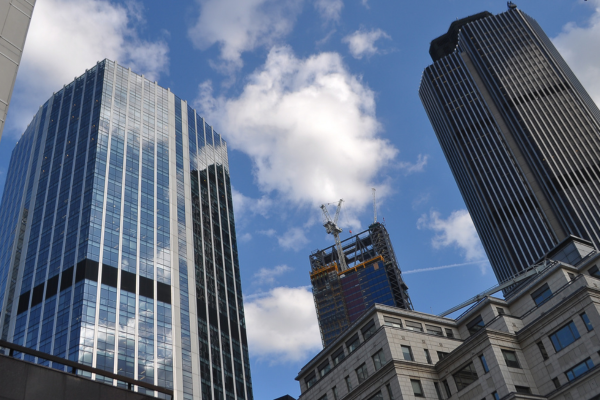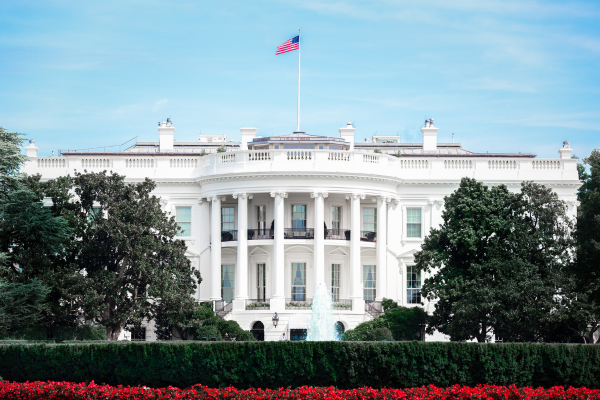Despite their reputation as being only for urban commercial real estate, Opportunity Funds are making an impact in ways you might not expect.
Since their creation in 2017, Opportunity Zones have been heavily politicized, with critics declaring them a tax break for the rich before they were even implemented. Research into OZ has been of little help because of how far behind it is. The most recent government analysis on Opportunity Zones only covers tax years 2019 and 2020, a report that states emphatically that “it is too soon to reach conclusions regarding the effectiveness of the OZ tax incentive.”
The reputation that Opportunity Zones are only for urban commercial real estate in areas that are already being gentrified is not entirely baseless. The majority of OZ investment has been in real estate, and as much as 95% of investment has gone toward urban areas – at least from the data that’s been presented, which as mentioned isn’t current.
Opportunity Funds have found success outside of urban real estate, but these projects often get overshadowed by rhetoric. To combat the negative public perception of Opportunity Zones, let’s highlight some examples of what Opportunity Zone projects actually look like. You might not have read about these projects before, but they’re proof of the good OZ is doing in communities across the country.
Opportunity Zones helping create our green future
Tracts designated as Opportunity Zones are often those with high unemployment and a lack of industry. This can make them ideal for growing industries that have the potential to bloom into the major markets of the future. Those who believe in sustainability and green energy are finding OZ to be a way to involve underserved communities in this great potential.
Instead of making traditional real estate improvements in Opportunity Zones, LandFund Partners focuses on substantial farmland irrigation improvements, grain bins, and sustainable agriculture. Through a dedication to crop diversity and regenerative farming practices, they’re improving the soil, reducing carbon output, and increasing yields. The result is an efficient use of land and an environmentally positive impact resulting from the OZ program.
Sustainable practices are also integral to Puerto Rico’s Monllor Capital Partners, which is using OZ to transform industries on the island. Puerto Rico imports over 80% of its food, meaning increased local production would cut down on energy usage and help the local economy. That’s why Monllor has invested in indoor vertical aquaponics, which use 90% less water than traditional farming. Monllor has also invested in renewable energy storage to create jobs and help Puerto Rico transition to a renewable future.
What these projects have in common is a focus on impact goals. By concentrating on what was needed most in the areas they serve, LandFund and Monllor discovered investments that generated solid returns and helped prepare for America’s green future.
How Opportunity Zones are creating specialized housing for seniors and veterans
When people think of real estate, their conceptions are generally big, like huge shopping malls and giant apartment complexes. What they may not think about is that real estate developments can be hyper-focused to deliver housing for those in need of access.
Urban Catalyst has invested in a variety of projects in Opportunity Zones, particularly in San Jose, CA. Gifford Place is the first senior living project in downtown San Jose in decades, addressing the coming need for more senior housing in Silicon Valley.
Other Opportunity Fund projects are addressing housing needs in different ways. Ellavoz Impact Capital, through its place-based Shared Values OZ Fund, has committed to offering veterans preference in order to provide affordable rent set-asides to veterans. By focusing on the housing needs of these communities, both Ellavoz and Urban Catalyst have been able to serve area residents of varying ages and income levels.
How Opportunity Zones can help minority and women-owned businesses
Housing that meets the needs of middle-income residents has been a passion for other Opportunity Funds as well. Opportunity Alabama has focused on building workforce housing in urban and rural areas, and its Community Growth Accelerator was designed to help historically underserved communities attract investment, something that has been a challenge for some rural parts of the country.
While OPAL Fund has found projects that can generate returns, its impact goal is to enrich local communities, which it’s also doing through an initiative to identify and support Minority and Woman-Owned Business Enterprises (MWBEs). By working with developers to establish business practices that align with their values, this Opportunity Fund has been able to provide an economic impact for business owners traditionally excluded from many industries.
How OZ can help operating businesses grow and thrive
While OZ investment can build housing and create jobs through construction, it can also be used for operating businesses within OZ tracts. Due to the holding period for OZ investments and the fact that many QOF managers are more familiar with real estate, the majority of OZ capital has gone toward real estate projects, but for OZ and its communities to thrive, more investment in operating businesses will be necessary.
Arctaris Imapct Investors has a vast portfolio of impact investments, including debt and Opportunity Zone equity investments. Its portfolio contains real estate investments, but also operating businesses like Arctaris Broadband, which operates fiber broadband infrastructure in Opportunity Zones, and Recaro, an automotive seating company that relocated to an Opportunity Zone thanks to investment from Arctaris. By combining QOF and non-QOF investments, real estate and operating businesses, Arctaris is providing a roadmap for the many things impact investments can be and their limitless potential.
Opportunity Zones improving health care and education
While OZ investment can help underserved communities by creating jobs, supporting local businesses, and providing housing, these communities have other needs that need to be served. Caliber is finding ways to use OZ incentives to fund projects like Phoenix Medial Psychiatric Hospital and Dallas-Fort Worth Behavioral Health Hospital, two facilities providing the mental and behavioral health care that America desperately needs. Caliber has also invested in an Arizona K-8 school, constructing a new 26,646-square foot facility for students.
That’s the great thing about Opportunity Zones: the more projects that find investment, the more we see impressive results in terms of both returns and impact, and the more obvious it becomes that OZ projects can be just about anything and succeed as long as they have the right expertise, attitude, and commitment to helping community stakeholders. The goal now is to show investors and the public that this is true so OZ can continue.
How to change the narrative around Opportunity Zones
One of the biggest misconceptions around impact investing has been the myth of impact vs. returns, which causes people to think one has to choose between making prudent investments and making an impact. Opportunity Zones are proof that one can do both.
As the 2023 report from the Department of the Treasury Office of Tax Analysis put it, “The incentive structure for OZ investments is not primarily to make a negative-return investment profitable, but rather to make a good return greater.” OZ investments are designed to produce both returns and impact from a variety of projects, but it’s taken time for fund managers and investors to understand how to use them.
Due to the slow rollout of finalized OZ regulations, both investors and Opportunity Fund managers needed education, and in the early days of OZ, many stuck to what they already knew best: commercial real estate in urban areas. But as OZ has evolved, we’ve seen how beneficial it can be for rural communities and industries like alternative energy, sustainable farming, and other high-impact projects throughout the country.
In order to ensure Opportunity Zones reach their full potential, two things need to happen: 1) more investment needs to go toward operating businesses, rural tracts, and other less-common OZ projects, and 2) the public needs to be aware of the wide variety of impacts Opportunity Funds are facilitating.
Both of these are education issues. Investors need to know that these projects generate both the impact they desire and the returns they want, and the public needs to be shown that the aspirations of OZ are being realized. The solution to both problems is proper data and reporting.
With thorough impact reporting like the kind offered by JTC, Opportunity Funds can make their projects easier for investors to understand. Detailed reports will show not only that their projects are generating returns, but that the hypothesized impact is being achieved. Once investors see that, they’ll be more likely to consider these types of OZ projects.
From a public education standpoint, impact reporting can justify OZ’s existence by highlighting all that is being done. While there have been proposals for more thorough government analysis of OZ impact, the burden currently rests with Opportunity Funds. If we want OZ to continue, we need to show that it’s working.
JTC’s impact reports focus on quantifying social impact throughout a project’s life cycle, updated consistently, employing methods for comparing impact across investments with different goals. The more we make these practices standard among the best funds, the more we can show investors and the general public that OZ really is making a difference.
Stay Connected
Stay up to date with expert insights, latest updates and exclusive content.
Discover more
Stay informed with JTC’s latest news, reports, thought leadership, and industry insights.
Let’s Bring Your Vision to Life
From 2,300 employee owners to 14,000+ clients, our journey is marked by stability and success.



















